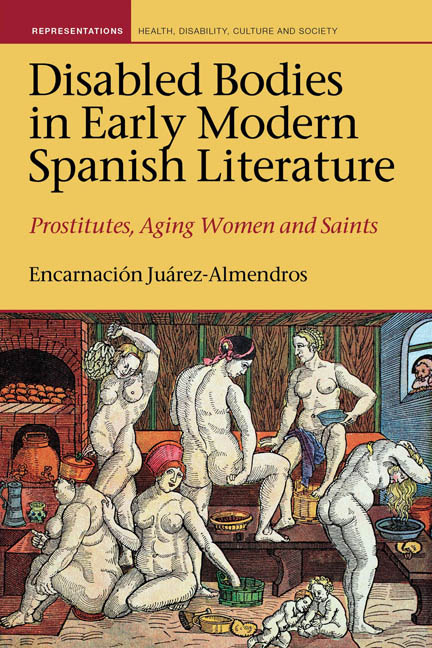Book contents
- Frontmatter
- Contents
- Acknowledgments
- Introduction
- I The Creation of Female Disability: Medical, Prescriptive and Moral Discourses
- II The Artifice of Syphilitic and Damaged Female Bodies in Literature
- III The Disabling of Aging Female Bodies: Midwives, Procuresses, Witches and the Monstrous Mother
- IV Historical Testimony of Female Disability: The Neurological Impairment of Teresa de Ávila
- Conclusion
- Works Cited
- Index
I - The Creation of Female Disability: Medical, Prescriptive and Moral Discourses
- Frontmatter
- Contents
- Acknowledgments
- Introduction
- I The Creation of Female Disability: Medical, Prescriptive and Moral Discourses
- II The Artifice of Syphilitic and Damaged Female Bodies in Literature
- III The Disabling of Aging Female Bodies: Midwives, Procuresses, Witches and the Monstrous Mother
- IV Historical Testimony of Female Disability: The Neurological Impairment of Teresa de Ávila
- Conclusion
- Works Cited
- Index
Summary
Research on female disability in early modern Spanish discourses seeks to answer how and why women's bodies have been negatively marked by society and culture. Toward that end, this chapter examines selected natural science texts as well as the social and moral prescriptions that predominated in Spain from the late fifteenth through the seventeenth centuries in order to elucidate specific concepts of corporeality during the period that inform artistic female representations. The anatomical descriptions of gendered bodies, and their somatic vulnerabilities, expected functions and assigned meanings, had remarkable political consequences. These discourses cooperated in the construction of a hierarchy of bodies that placed women, especially unruly females, at the bottom of the scale.
This chapter begins with an overview of selected male-authored vernacular medical texts circulating in the Iberian Peninsula that exemplify concepts of women's physicality. These manuals include general descriptions of the constitution of the female body, gynecological and obstetric treatises and epidemic literature, where women were allegedly implicated in the development and propagation of certain widespread diseases of the period, such as syphilis. I also investigate the function of public health recommendations and regulations concerning poverty and prostitution, as well as the role of hospitals, workhouses, penitentiaries and brothels in segregating poor women. Finally, I explore illustrative moral treatises that, in the same spirit that stimulated public health initiatives and poverty reforms, present guidelines of ideal female behavior based on the assumptions that women were fragile, defective and unstable and, therefore, needed to be subdued and controlled.
Although, clearly, general notions of women's inferior embodiment and mental feebleness and the subsequent social oppression make all women disabled by default, my objective is to uncover certain physical specificities, situations and tropes in the hierarchical social pattern that constitute the paradigm of disability in early modern Spain. Unruly, poor, ill women are the objects of maximum social stigma. Although, paradoxically, imperfect and powerless female figures are very present in the male artistic imagination, historically they form an anonymous group without voice. They left traces of their existence through indirect information, such as their role in pollution, hospitalization records, government regulations or sporadic legal complaints of disorderly behavior.
- Type
- Chapter
- Information
- Disabled Bodies in Early Modern Spanish LiteratureProstitutes, Aging Women and Saints, pp. 17 - 55Publisher: Liverpool University PressPrint publication year: 2017

